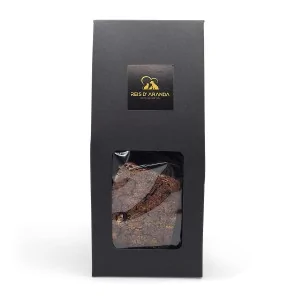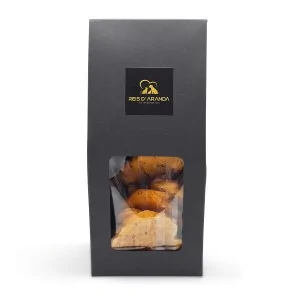Its name says it all: the Vienna blue rabbit comes from Austria. Not only is it beautiful with its shiny blue-grey...
THE BEAUCERON
INTRODUCTION
The Beauceron is a breed of shepherd dog of very ancient origin with a rustic and strong appearance. It is also known by names such as Beauce Shepherd or Bas rouge because of the tan markings on its legs.
THE ORIGIN OF THE BEAUCERON
It originates from the region of Beauce, in the northwest of France, near the end of the 16th century. Originally, the Beauceron was created to be used as a guide and to guard livestock. In fact, it is the most famous French dog in rural and farm areas, as its contribution and activity is of great help to shepherds.
Originally, the Beauceron was used together with another breed, the Briard, to guard sheep and cattle, as they were the most common and best at this type of activity.
Instead of moving and barking to guide the herd as other herding breeds do, they surround the flock in silence and lead it in a much calmer but more efficient way.
Later, the Beauceron was used in the world wars to protect and send messages between the trenches, and today that activity has not changed, as the army and police continue to use this breed for such events.
As with other breeds of dog, you have probably come across a particular breed that is known by a nickname or nickname, because these types of labels are usually given to certain dogs that have physical characteristics or special abilities that differentiate them from others.
In this case, the Beauceron was not going to be less. This magnificent dog is known in several countries as ‘Red Socks’ or ‘Vas rouge’ in his homeland. The name comes from the curious physical characteristic of its legs. Generally, this breed has reddish on the underside of its paws, looking as if it is wearing red socks, hence the name.
So if you are thinking of getting a puppy of this breed, you already know that you can call it ‘Red Socks’, and when they ask you what the name is due to, you will know exactly why.
As we have already mentioned, the Beauceron was the perfect dog for the trenches, as they could send and protect important messages. But above all, of all the European breeds, this one stood out greatly in the First Great War.
Due to his great talent and agility in combat, he was used in the trenches to send messages to other military colleagues or high ranking officers to report how the battle was going.
This had an incredible impact, leading to the breed being officially recognised in 1963.
THE BEAUCERON STANDARD
GENERAL APPEARANCE: The Beauceron is a large dog, solid, powerful, powerful, husky, well built and muscular, with no appearance of heaviness.
IMPORTANT PROPORTIONS: The Beauce Shepherd is a medium-sized dog. The length of the body, from the point of the shoulder to the point of the buttock, should be slightly superior to the height at the withers.
The head is long: 2/5 of the height at the withers. The width of the skull and the height of the head are slightly less than half the length of the head. Skull and muzzle are of equal length.
HEAD: Well moulded and harmonious in its lines. Seen in profile, the lines of the skull and the muzzle are clearly parallel.
CRANIAL REGION:
SKULL: Flat or slightly rounded from one side to the other. The median furrow is not very pronounced and the occipital crest is apparent at the top of the skull.
STOP: Not very pronounced. Equal distance between occiput and tip of muzzle.
FACIAL REGION:
TRUFFLE: In proportion to the muzzle, well developed, never split. Must always be black.
NOSE: Neither narrow nor pointed.
LIPS: Firm and well pigmented. The upper lip should cover the lower lip without flabbiness and the corners of the mouth should form a slight beginning of a pocket which should remain closed.
TEETH / TEETH: The dentition is strong and the articulation is scissor-like.
EYES: Horizontal, slightly oval in shape. The iris should be dark brown, or in any case never lighter than dark hazel, even if the tan is light. Eyes of a different colour are permitted for the harlequin variety.
EARS: Set on high. The ears are semi-erect or pendant. They should not be flat against the cheeks, but flat and rather short. Their length should be equal to half the length of the head.
NECK: Well muscled and long, harmoniously attached to the shoulders.
BODY :
UPPER LINE: The back is straight. The loin is short, broad and well muscled. The croup is slightly sloping.
CROSS: Well defined.
CHEST: The thoracic perimeter should be one fifth greater than the height at the withers. The chest slopes all the way down to the point of the elbow; broad, high and long.
TAIL: Undocked. Set on low, reaching at least to the point of the hock, without deviation. It forms a slight hook resembling a J. When the dog is in action, the tail may be set on the highest part of the extension of the upper margin.
LIMBS
FOREQUARTERS: Seen from the front and in profile, well laid back.
Shoulders: Oblique and moderately long.
FOREARMS: Muscular.
HANDS: Strong, round and compact. The nails are always black. Pads are hard but elastic.
HINDQUARTERS: Seen from the side and from the rear, thehindquarters are well laid back.
Upper thighs: Broad and well muscled.
Hock: Strong, not too low to the ground. The point is approximately 1/4 of the height at the withers, forming a well open angle with the leg. The metatarsals are almost vertical and lie slightly to the rear of the buttock.
FEET: Strong, round and compact.
Dewclaws: Traditionally, sheepdogs have retained the double dewclaw. The dewclaws form well separated toes, with nails well attached to the foot.
GAIT / MOVEMENT: Springy and loose. The limbs are well aligned. The Beauce Shepherd should have a long trot, with a great range of movement.
COAT
HAIR: Short on the head; strong, short, thick, thick, dense and smooth on the body, 3 to 4 cm in length. The buttocks and the underside of the tail are slightly, but necessarily more fringed. The undercoat is fine, dense and velvety, preferably mouse grey, with close lying hairs which should not show through the top coat.
COLOUR:
- Black and tan (black with fawn markings): red at the extremities. The red colour is very intense, the tan should be squirrel red. The tan markings should be distributed as follows:
-round markings over the eyes
on the sides of the muzzle, progressively decreasing on the cheeks, without ever reaching the lower part of the ear, - on the forechest, on the chest, on the sides of the muzzle and on the cheeks.
-on the forechest, preferably two throat markings
-on the underside of the tail
-on the limbs, progressively fading as they rise, but never covering more than 1/3 of the limb.
- Harlequin (blue myrtle with fawn markings): grey, black and tan. The coat is black and grey in equal parts, as the patches are well distributed, although sometimes there is more black than grey. The tan markings occupy the same place in the black and tan variety.
A discreet white spot on the forechest is acceptable.
SIZE:
HEIGHT AT WITHERS:
- Males: 65 to 70 cm,
- Bitches: 61 to 68 cm.
FAULTS: Any departure from the foregoing points should be considered a fault and the seriousness with which the fault should be regarded should be in exact proportion to its degree and its effect upon the health and welfare of the dog.
DISQUALIFYING FAULTS:
- Aggressiveness or extreme shyness.
- Any dog showing clear signs of physical or behavioural abnormalities.
- Size outside the limits of the standard.
- Too light in bone structure.
- Eyes too light, or eyes of a different colour (except for the harlequin variety).
- Split nose, colour other than black, patches with depigmentation.
- Prognathism involving loss of contact, absence of three or more teeth (PC1 are not taken into account).
- Ears not cropped fully erect and firm.
- Excessively deviated hindquarters.
- Single dewclaws or total absence of dewclaws on the hind legs.
- Tail docked or curled over the back.
- Coat of a colour and texture different from the standard. Total absence of tan. Hirsute coat. Highly visible white mark on the forechest. Harlequin variety: too grey, black on one side, grey on the other side, head completely grey (absence of black).
N.B.:
- Males should have two apparently normal appearing testicles fully descended into the scrotum.
Only functionally and clinically healthy dogs with breed typical conformation should be used for breeding.
THE HEALTH OF THE BEAUCERON
The Beauceron is a robust dog with no major health problems, but may suffer from:
- HIP DYSPLASIA: D ysplasia is a bone disease, congenital, hereditary, degenerative and multifactorial, i.e. it can be caused by multiple factors. For it to appear there must be a genetic predisposition to which other factors can be added, such as poor diet, rapid growth, excessive exercise during growth, growth on slippery ground, obesity, old age and the wear and tear it causes..... Studies are currently underway to determine the genetic predisposition of individuals, however, for the moment the tests are based on the development or not of this disease and not its genetic predisposition.
Hip dysplasia consists of the malformation of the hip acetabulum and the femoral head, causing the femur and pelvis to not fit together correctly and causing pain and even lameness in the animal. - ELBOW DYSPLASIA: Elbow dysplasia consists in the incongruence between the three bones that make up the elbow joint, humerus, ulna and radius, producing collisions and friction that trigger joint alterations causing pain and even lameness to the animal.
THE BEAUCERON'S PERSONALITY
The beauceron is loyal and protective, making it a good watchdog and guard dog, which is protective of the family and its territory. They tend to be a dominant breed and require a firm hand in training. If handled with patience, this breed can become an ideal companion. They can be territorial around other pets and should be introduced to other dogs in their early training.
The beauceron is an intelligent breed and is a quick learner. They enjoy challenging activities and need regular outings for their energy. A daily walk, or at least freedom to run in a large garden, is imperative.
The beauceron is best suited to farms or a home with a large, fenced garden that allows them to unleash their high energy. They can adapt to both indoor and outdoor living, but prefer to be outside. They are intelligent dogs who enjoy having a job to do. They will be watchdogs and will protect their people. Early socialisation is best for them to accept other pets and children in the house.
CONCLUSION
The Beauceron is considered a fearless and courageous dog. When not used as a herding dog, it is a vigilant companion. It confidently protects the house and yard and always looks out for its family. These energetic four-legged friends are good-natured. They protect their loved ones without being intrusive. Beaucerons also like to let their owner take the initiative. However, they are vigilant and always watchful of what is going on.
Leave a comment
Log in to post comments
















